Employment hits a new high in May, with the daily series above 21.8 million, and an additional 2.8 million people joining the workforce in seven years
News - 2025.6.3
The number of Social Security contributors once again exceeded 21.5 million in May (21,570,929), discounting seasonality and the calendar effect. This represents an increase of 20,790 in the number of registered workers over the previous month and 455,232 over the last year (+2.2%).
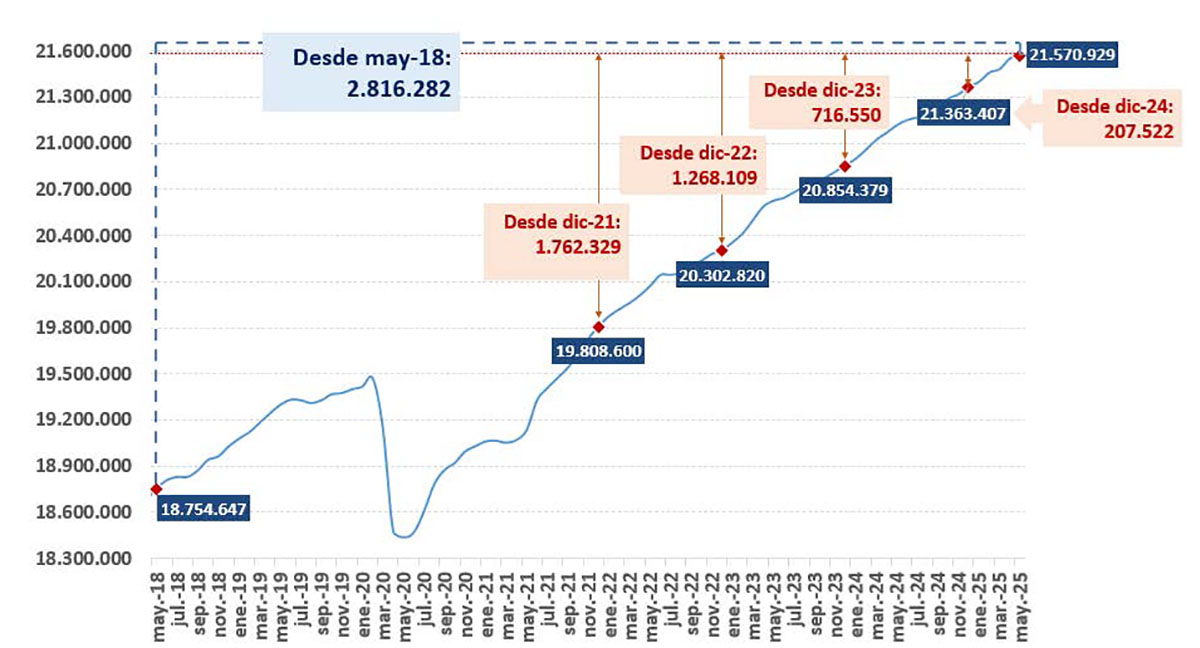
"Since we came to government in June 2018, there are 2.8 million more contributors, and this despite the fact that we have experienced a pandemic, an inflation crisis, the invasion of Ukraine and the conflict in Gaza Moreover, 1.5 million of them are women," explains Elma Saiz, Minister for Inclusion, Social Security and Migration. "In this context, we continue to set record highs every month, and we have the prospect of reaching 23 million contributors by the end of the legislature in 2027. Moreover, the jobs created are of higher quality, where nine out of ten are permanent contracts".
Average affiliation (original series) is close to 21.8 million (21,784,375), with 195,736 more people in employment than in April (+0.9%). This is 462,581 more employed people than a year ago (+2.2%). If we add together the April and May increases (+426,729) we see a higher rate than in 2024 (when there were 419,828 more people in employment) and the 2017-2019 average (+415,842).
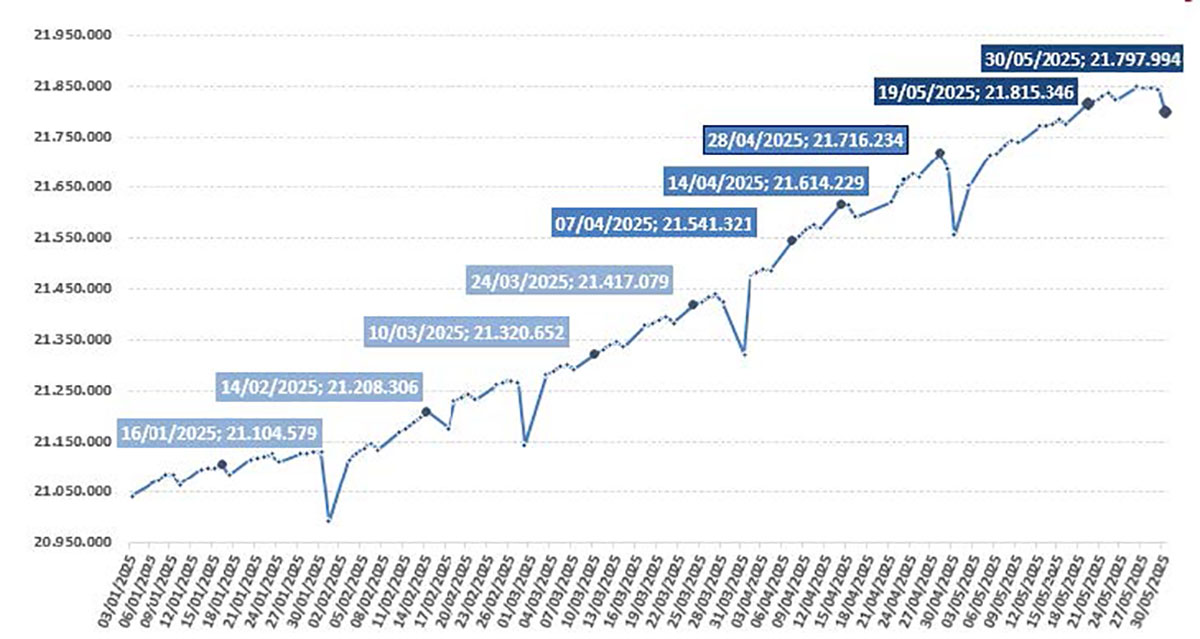
Employment levels are therefore at a new all-time high, with the daily series above 21.8 million employed people for the first time in history. This figure was exceeded between 19 and 29 May.
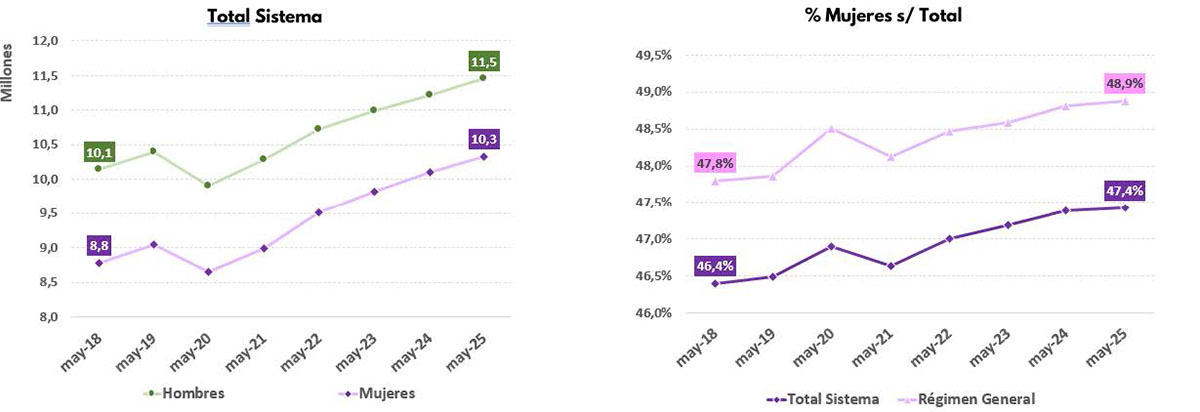
In addition, the number of women affiliated to Social Security reached an all-time high this month, at 10,328,015, which represents 47.4% of the total. "More women are working in Spain today than ever before and the gender pay gap has been reduced by 5 points since 2018. Our government's record, in terms of more and better employment, is very satisfactory and we will continue to work to improve it", explained Elma Saiz.
In May, all sectors in the General Regime gained contributors in monthly terms, particularly Hotels and Restaurants (+4.9%). In the last year, the sector that has grown the most has been Transport and Storage (+6.8%). Also showing strong gains were Arts, Entertainment and Recreation (+4.9%), Agriculture, Livestock, Hunting, Forestry and Fishing (+4.6%), and Scientific and Technical Activities (+3.8%).
The number of self-employed workers, on the other hand, once again exceeded 3.4 million (RETA and SETA), with 3,414,593 self-employed workers. The number of self-employed workers has increased by 37,370 since May 2024 (+1.1%) and 153,195 in the last seven years, with almost 61% of these new jobs in high value-added sectors.
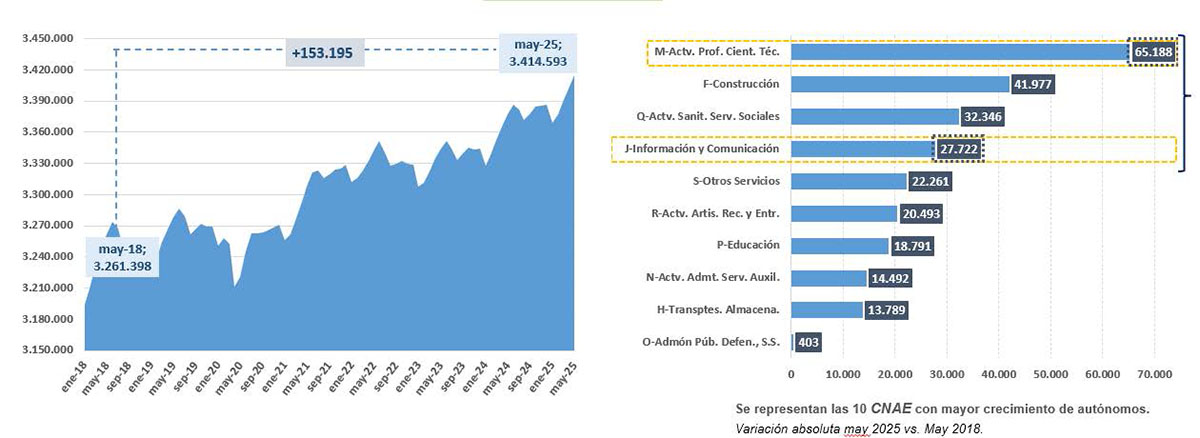
In the last year, the number of self-employed workers in Information and Communications and Professional, Scientific and Technical Activities has increased by 10% and 4.5%, respectively. They account for more than 23,090 new self-employed workers, more than half of the increase in self-employed workers in this period.
Higher employment growth than other major European economies
As in previous months, job creation in Spain (+9.3%) notably exceeded that of the major European countries (Italy, +6.4%; France, +1.8%; Germany, +1.6%), calculated from the end of 2021, prior to the entry into force of the labour reform.
In terms of the quality of employment since the start of the labour reform, there are over 4 million more workers with permanent contracts, an increase of 38.9% since 2022. "For decades, millions of workers were trapped in temporary and precarious employment," explained Saiz. "Today, thanks to the labour reform, the situation has changed at the root".
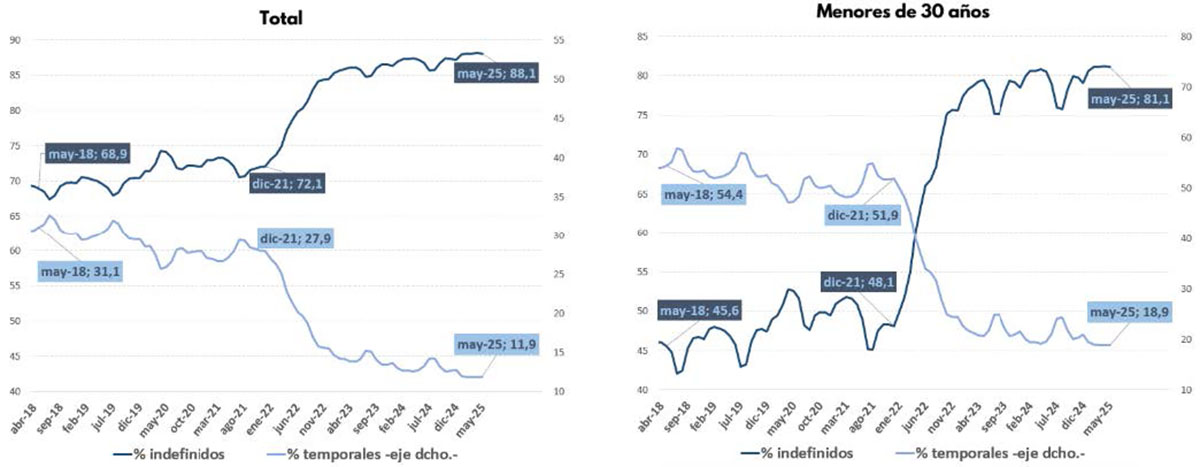
At present, there are almost 15.2 million employed people with permanent contracts (15,199,364), of whom more than 9.9 million work full time. The number of permanent-intermittent employees has stabilised, now accounting for only 6.3% of the total number of employees.
The weight of temporary workers is below 12% (11.9%), down from 31.1% in 2018. This improvement is even greater among younger workers, who seven years ago had a temporary employment rate of over 54% and this is now below 19%.
Non official translation







